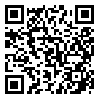BibTeX | RIS | EndNote | Medlars | ProCite | Reference Manager | RefWorks
Send citation to:
URL: http://jstnar.iut.ac.ir/article-1-2903-en.html
Recently, catchments were considered as planning and management units for sustainable development in many issues. Catchment sources management is considered as a new principle for development planning and management of water and soil resources emphasizing on socio-economic characteristics of the region to sustainable livelihoods and without vulnerability of plant and the residents of an area. These objectives will be achieved when the proper management of resources and the management should be applied to decrease destructive processes and strengthen the improvement processes. Aiming at biological management of watershed resources with scenario building approach, this study has assessed and prioritized biological management options in the Delichay Catchment. With a choice of four biological management activities, 16 scenarios were developed in the study area. Then, criteria weighting was carried out using analytic hierarchy process and ultimately, the best management option was chosen using TOPSIS model. The results indicated that social, ecological, economic and physical criteria were respectively prioritized from one to four and scenario number 10 was determined as the best scenario and the first priority. Also, the results showed that the multi-criteria decision making techniques included capability of expressing different aspects of the problem and are perfect tools for integrated watershed resources management.
Received: 2015/02/12 | Accepted: 2016/12/7 | Published: 2017/11/12
| Rights and permissions | |
 | This work is licensed under a Creative Commons Attribution-NonCommercial 4.0 International License. |







